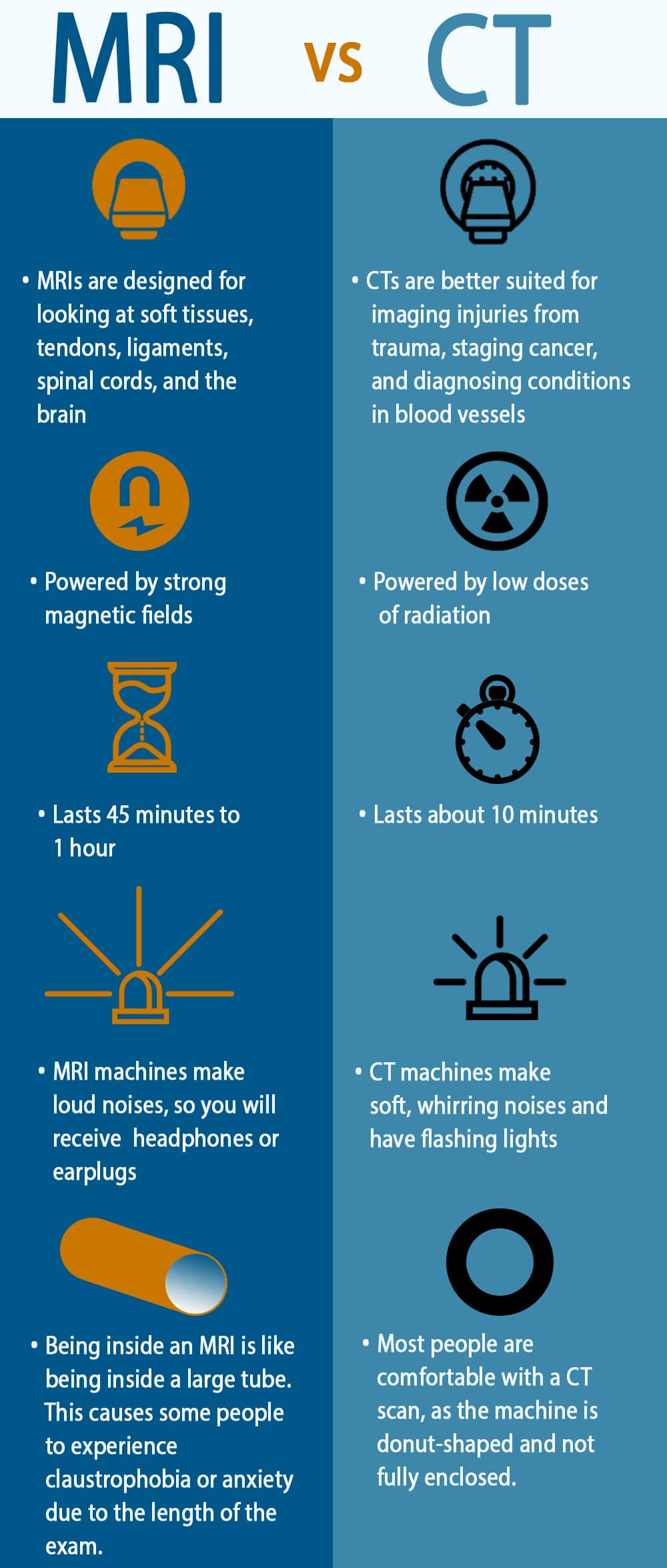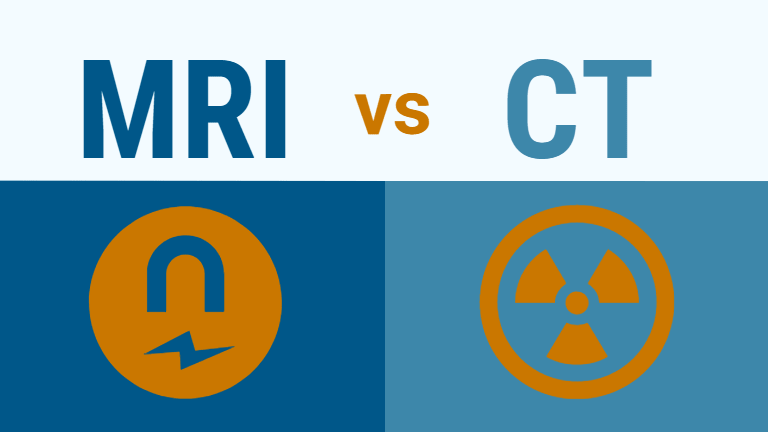MRI vs CT: were you told that you needed to have one of these exams? These machines look similar, and both have unfamiliar acronyms- so what’s the difference? Continue reading to learn more about these imaging devices, the differences between them, and what experiencing each type of exam may be like.
MRI stands for Magnetic Resonance Imaging and CT stands for Computed Tomography. Radiologists use the images from both of these scans to detect, diagnose, monitor, and treat a variety of injuries, disorders, and diseases. However, these machines capture images very differently!
Knowing the Difference: MRI vs CT
Many factors contribute to why your doctor might suggest one of these scans over the other, but here are the most common:
-
Purpose: MRI scans are great for creating very detailed 3D images of soft tissues, tendons, ligaments, your spinal cord and your brain. CT scans are better suited for imaging injuries from trauma, staging cancer, and diagnosing conditions in blood vessels.
-
Power: CT images are powered by radiation, and doctors might prefer children, expectant mothers, and certain parts of the body to have MRIs to avoid radiation-related complications. Conversely, patients with metal implants from past surgeries or pacemakers cannot have an MRI because MRIs are powered by strong magnetic waves.
-
Part of the body: CT scans image bony material and blood vessels better than MRIs, and MRIs image soft tissues much clearer than CTs.
-
Pace: CT scans are typically far quicker than MRI scans. CT machines take images in “slices” which are compiled by a computer to created detailed images. Doctors tend to use CTs in emergency situations because of their speed.
For more differences in the scans, check out this helpful MRI vs CT infographic:

Special thanks to Chief MRI Technologist Jamie Weathersbee and Chief CT Technologist Lorie Hubbard for helping put together this article!
Infographic Text: MRI vs CT
Purpose:
-
MRIs are designed for looking at soft tissues, tendons, ligaments, spinal cords, and the brain.
-
CTs are better suited for imaging injuries from trauma, staging cancer, and diagnosing conditions in blood vessels.
Powered by:
- MRIs are powered by strong magnetic fields
- CTs are powered by low doses of radiation
Average Duration:
-
MRIs last 45 minutes to an hour
-
CTs last about 10 minutes
Noise:
-
MRI machines make loud noises, so you’ll receive headphones or earplugs
-
CT machines make soft, whirring noises and have flashing lights
Difference in Comfort:
-
Being inside an MRI is like being inside a large tube. This causes some people to experience claustrophobia or anxiety, due to the length of the exam.Most people are comfortable with a CT scan as the machine is donut-shaped and not fully enclosed.



